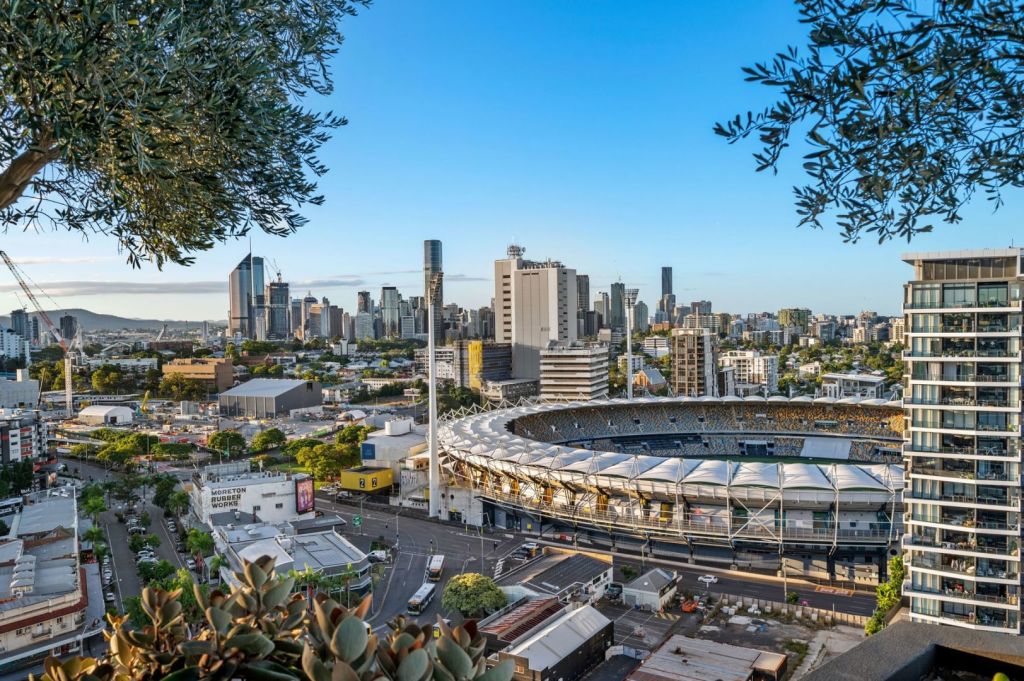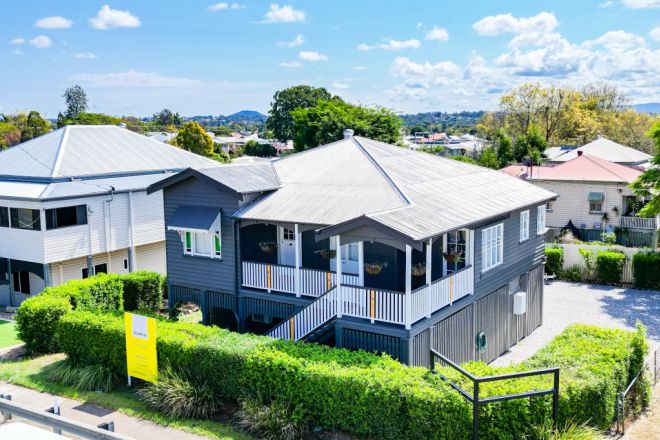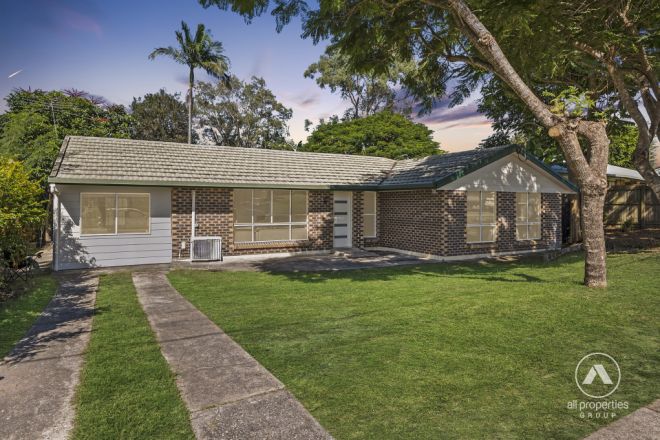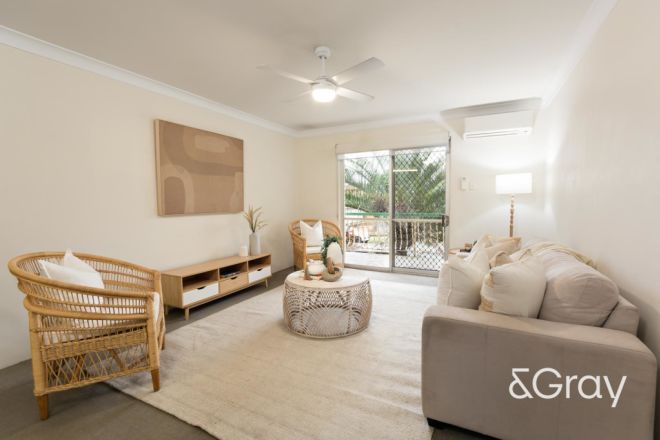Is south-east Queensland the best area for property investment in Australia in 2024?
An infrastructure boom amid skyrocketing rental yields almost double that of Sydney’s has brought a wave of southern investors back to Brisbane’s new ‘golden triangle’.
Stretching between Logan, Ipswich and Beenleigh, the still affordable hotspot encompasses some of the region’s last remaining pockets where you can buy a home for under $700,000 and rent a unit for $350 a week. These two key ingredients have fuelled a 25 per cent annual investor surge, experts say.
The rise comes after an almost two-year slump fuelled by the 2022 Queensland land tax reforms and rising interest rates, which spooked scores of investors out of the market. The reforms – scrapped later that year – would have seen the land tax rate for investment property assessed on the investor’s Australia-wide land holdings rather than just those in Queensland.
As the Sunshine State collects record rates of interstate migration and major infrastructure investment ahead of the 2032 Olympics, savvy Sydney buyers are particularly homing in on Brisbane, with punters saying the capital has become one of the nation’s hottest investor cities. And that new golden triangle where rental yields are through the roof is luring the lion’s share.

Data from Domain’s latest Rent Report, released in April, revealed that units in Logan City boast the highest rental yield across south-east Queensland at 7.66 per cent, with median weekly rents rising 20 per cent to $360 per week in 12 months. Eagleby units ranked second with a rental yield of 6.72 per cent, with rents rising 16.7 per cent annually to $420 per week.
In comparison, Brisbane’s average unit rental yield is 5.5 per cent, while Sydney’s is a lower 4.67 per cent. The national average, according to the Domain report, is 5.1 per cent.
Property investor and buyers’ agent Sam Gordon from Australian Property Scout said rising rents across the Queensland capital, in particular, brought bucketloads of investors back to the fore.
“I reckon we’ve seen about a 25 per cent shift in investor activity over the past six to 12 months and that’s a good increase,” he said.
“A lot of my clients see longer-term growth in Brisbane thanks to the amount of infrastructure being built there and the number of people moving there.

“They are looking at spending about $700,000, and that’s why Logan and Ipswich are getting that heat.
“So Brisbane is now up there (for investors). While Perth is considered the hottest market, Brisbane is hot on its heels … but there’s a lot of demand thanks to those yields and there’s also a lot of competition from first home buyers.”
Gordon said his most savvy investors are nabbing off-market deals on “ugly ducklings” where they could value-add.
“I believe the next 12 to 24 months will stay very strong in Brisbane thanks to population growth and the fact that the housing shortage is not going to be resolved any time soon,” he said.
“The toughest part for us right now is stock levels and client expectations of what they can get for their money because what you could buy a year ago for $500,000 is now selling for $600,000.”

Rob Ford, Founder and Director of Zevesto, which focuses on swathes of that golden triangle, said investor activity had indeed ramped up in his sought-after patch, but they were struggling to outbid the hungry hordes of owner-occupiers.
He agreed rising rents were driving the investor crowd – largely from Melbourne and Sydney – and said properties with granny flats were in hot demand.
“Across the board our rental renewals were up by 18 per cent over the year which tells us there’s a shortage of rentals … there are also an awful lot of people moving into South East Queensland, so I do think demand is the driving force,” said Ford.
“I think we’re probably also towards the end of the rate rise cycle and while there’s a bit of debate around whether it will go up or down, for investors there is a fair amount of certainty now.”


Ford said homes with an auxiliary unit or granny flat in Logan, Marsden, Boronia Heights and Woodridge were particularly hot properties. Their biggest challenge now was the lack of homes.
“Our stock levels are about 20 per cent below the long-term average, and that’s consistent across the business inventory. The whole industry is tight, and there will be enormous demand for the foreseeable future.
“But right now, if I had $500,000 to invest, I’d probably put it in somewhere like Eagleby.”
While Brisbane’s bargain boroughs are big investor magnets, Domain’s Rent Report revealed that traditional inner-city tenant hotspots are still boasting top rental yields. Brisbane City units sit at 5.97 per cent after rents climbed 22.8 per cent annually to $700 per week.
Ray White New Farm Principal Haesley Cush said investors were fast wading back into the inner-city property pool, spurred by Brisbane’s good outlook and the capital uplift.

“With interest rates softening a little bit and rents going up it makes it attractive for negatively geared investors and … and if you have to borrow less and get a bigger yield then you are making more money in your purse and that’s where Brisbane looks great,” said Cush.
“Investors are coming back because of that lower barrier of entry. Fifteen minutes from the CBD in Brisbane is a lot more affordable than 15 minutes from the CBD in Sydney.”
Cush said houses were a hot commodity thanks to a greater capital uplift than units. However, he said some of the best places to put your investor dollars were suburbs such as Nundah, which were close to the city and had a good housing blend while being close to public transport.
He said Chermside was another hotspot where savvy investors were putting their dollars, with Woolloongabba a strong emerging market thanks to its huge transport services and shopping precincts.

“Conditions are excellent (for investors) … and in terms of the suburbs I really like right now they are those around the city that have infrastructure. I think Cannon Hill is really starting to develop and there’s a good shopping precinct there and as the city creeps it’s sitting in that sweet spot,” said Cush.
On a commercial level, Mish Daniel of Revolve Commercial said her team had clocked up a colossal investor spike of more than 50 per cent over the past couple of years.
“I think there are a couple of reasons for that. Brisbane hasn’t traditionally been seen as one of the growth capitals and there’s also the matter of Queensland being cheaper (than its southern counterparts),” she said.
“That’s made it very palatable to investors. Queensland is also on an expansion growth mission and investors are absolutely seeing bang for buck, particularly with the housing shortage driving prices up and so much unexploited territory.”
Daniel pointed to the larger ‘golden triangle’ between the Gold Coast, Toowoomba and the Sunshine Coast as prime property for southern punters.
“Toowoomba is a whole little micro economy by itself … we have seen a huge spike there. There’s also a massive amount of capital expenditure going in there.”
We recommend
We thought you might like
States
Capital Cities
Capital Cities - Rentals
Popular Areas
Allhomes
More







